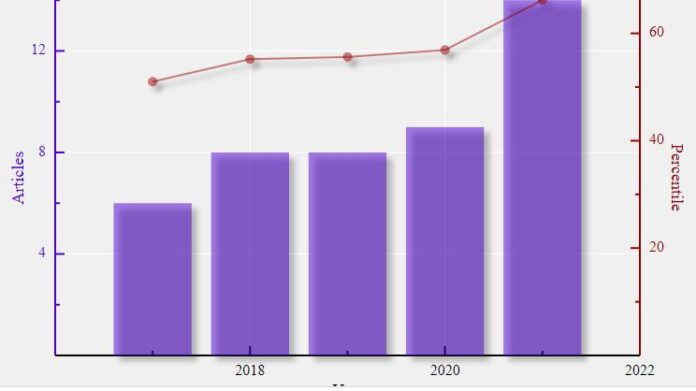Healthcare systems are organizations that consist of people, institutions, and resources. This system is responsible for providing health care services to a target population. As a result, the healthcare system deals with a large amount of data every single day. The process of maintaining a patient’s records requires precision. Each patient has a different type of insurance. They have different medical histories and treatments. A single error can cost the patient his life, and the healthcare system has to suffer the consequences.
According to Statista, the United States lost 500 records in January 2022. Moreover, the number of security breaches has increased from 18 cases in 2009 to 712 in 2021. The rise in cyber security threats has raised concerns about the validity of outdated security systems in healthcare systems. That is why healthcare providers worldwide are moving toward a zero-trust security model to safeguard their data against malicious threats.
How Does The Zero Trust Model Secure Healthcare Data?
Zero Trust implementation in healthcare organizations is essential for the protection of patients as well as healthcare providers. It offers a comprehensive solution to the problem of internal and external threats. It follows the concept of “Trust no one, Verify All”. This approach may seem rigid to people working in the healthcare system. However, several security threats come from inside the workplace because of malicious intent or human error.
Employing Multi-factor Authentication
The Zero Trust security model minimized the chances of internal breaches on healthcare data by verifying each individual. As members of the personnel log in to the data center, they have to go through a multifactor authentication process. The member provides two or more indicators to verify their identity.
These identification signatures can include passwords, USB cards, smartphones, biometric identifiers, or a special code assigned by the administrator. If a cybercriminal breaches the first level of authentication, the Zero Trust security model stops them in their tracks with a second and third security protocol. As a result, healthcare data is secured from all types of internal and external data breaches and continue to work seamlessly.
Visible Traffic Through Micro-segmentation
Zero Trust creates a system in which there are various segments in the data. Each employee is assigned a particular segment and has access to its data. When the employees open or use the data in each segment, the Zero Trust security provides prompt notifications. These alerts help the healthcare administration keep track of all the traffic moving through their network and applications. The security controls at each segment stop individuals from intercepting the data.
Compliance With Government Regulations
Zero Trust security helps the healthcare system comply with the Health Insurance Portability and Accountability Act (HIPAA). Its multilayered and perimeter-less security saves health care data from all types of threats. The Protected Health Information (PHI) compliance protects the following essential details of a patient:
- Medical Insurance
- Demographic Details
- Social Security Data
- Medical History
- Tests
- Lab Results
- Payments
- Types of treatment provided to a patient.
The individually defined identifiable information defines the data of each individual. It can help patients get access to donor organs and specialized treatments. Most malicious actors try to steal medical insurance information or bank account details to transfer the patients’ assets for personal use. A security breach of such sensitive information leaves the patient vulnerable to identity theft and misdiagnosis.
The Zero Trust security model protects the individual’s information and uses a perimeter-less security system. It verifies every individual inside and outside the healthcare system’s network. Moreover, the authentication and authorization of each application, device, and user keep the data safe from external and internal threats.
Policy Based Authorizations
Each healthcare system has its own set of policies when it comes to the management of healthcare data. Most of these policies are generalized according to outdated security models. These models consider all the activity inside the perimeter of the healthcare center as safe. It places implicit trust in the personnel of the medical organization and the staff members leading to internal data breaches.
The Zero Trust security approach removes any implicit trust in the healthcare network or its employees. It sets security policies based on the number of devices used by a network, the registered users, and any external networks connected to the mainframe of the healthcare data center. These policy-based authorizations enable administrators to track the activities of various employees and provide timely security alerts.
Implementing A Zero Trust Architecture
The Zero Trust architecture employs a Software Defined Perimeter(SDP) to extend the perimeter of the database beyond the four walls of a healthcare building. It hides the physical location of the database. The Zero Trust model hides the routers and servers. It also protects the IP addresses of healthcare providers. Moreover, a cloud-based infrastructure stops the intruder from stealing any data through lateral movement.
Each healthcare system has the liberty to install its preferred form of Zero Trust architecture. A service provider analyses the security requirements of a database and suggests various types of Zero Trust implementation methods. Healthcare providers can choose to implement Mesh VPNs, peer-to-peer (P2P) architecture, and network access control (NAC) platforms.
Conclusion
Cybercriminals are adapting rapidly to face the security obstacles used in healthcare databases. They keep learning new ways of phishing for data, implementing ransomware attacks, and conducting identity theft. Zero Trust security offers a comprehensive solution for data protection. According to a recent study by Statista, 57% of organizations all over the world are implementing Zero Trust architectures to protect their data. Zero Trust security framework, is the ultimate solution to improve the security of healthcare systems with a robust security framework.





